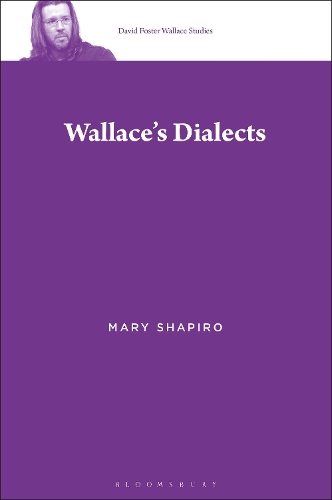
Wallaces Dialects
(Paperback)
Available Formats
Publishing Details
Wallaces Dialects
By (Author) Dr. Mary Shapiro
Bloomsbury Publishing PLC
Bloomsbury Academic USA
30th December 2021
United States
Classifications
Professional and Scholarly
Non Fiction
Sociolinguistics
813.54
Physical Properties
Paperback
240
Width 140mm, Height 216mm
272g
Description
Mary Shapiro explores the use of regional and ethnic dialects in the works of David Foster Wallace, not just as a device used to add realism to dialogue, but as a vehicle for important social commentary about the role language plays in our daily lives, how we express personal identity, and how we navigate social relationships. Wallaces Dialects straddles the fields of linguistic criticism and folk linguistics, considering which linguistic variables of Jewish-American English, African-American English, Midwestern, Southern, and Boston regional dialects were salient enough for Wallace to represent, and how he showed the intersectionality of these with gender and social class. Wallaces own use of language is examined with respect to how it encodes his identity as a white, male, economically privileged Midwesterner, while also foregrounding characteristic and distinctive idiolect features that allowed him to connect to readers across implied social boundaries.
Reviews
Shapiros linguistic lens offers a deep and provocative look at the dialectic of aesthetics and politics in Wallaces language. Shapiro leaves no dialect unexamined, no idiom unturned. * Ralph Clare, Associate Professor of English, Boise State University, USA, and author of Fictions Inc.: The Corporation in Postmodern Fiction, Film, and Popular Culture (2014) *
Wallaces Dialects is the book Wallace Studies desperately needed without yet knowing it. Bringing the fresh lens of linguistics to Wallaces work, Mary Shapiro demonstrates how Wallace carefully constructed a wide range of dialects in order to interrogate and challenge categories of race, ethnicity, gender, nationality, and regionality, while also enabling readers to empathize with members of all categories. Shapiro engages critics of Wallaces constructions of gender and race, both inside and outside the academy, using examples from across his work to argue that more than exposing his blind spots, Wallaces fascination with dialect reveals his own reflections on his white male privilege. Seasoned Wallace readers and critics will find in Wallaces Dialects aspects of Wallaces work that have been staring us in the face unseen for far too long, while new readers will find an excellent place to start to appreciate Wallaces intricate linguistic constructions and their attending social critique. * Mary K. Holland, Professor of English, SUNY New Paltz, USA, and co-editor of Approaches to Teaching David Foster Wallace (with Stephen J. Burn, 2019) *
Author Bio
Mary Shapiro is Professor of Linguistics at Truman State University, USA.
